8 of the best cold brew coffee makers for a refreshingly cool beverage at home
'Cause cold-brew and iced coffee are *NOT* the same
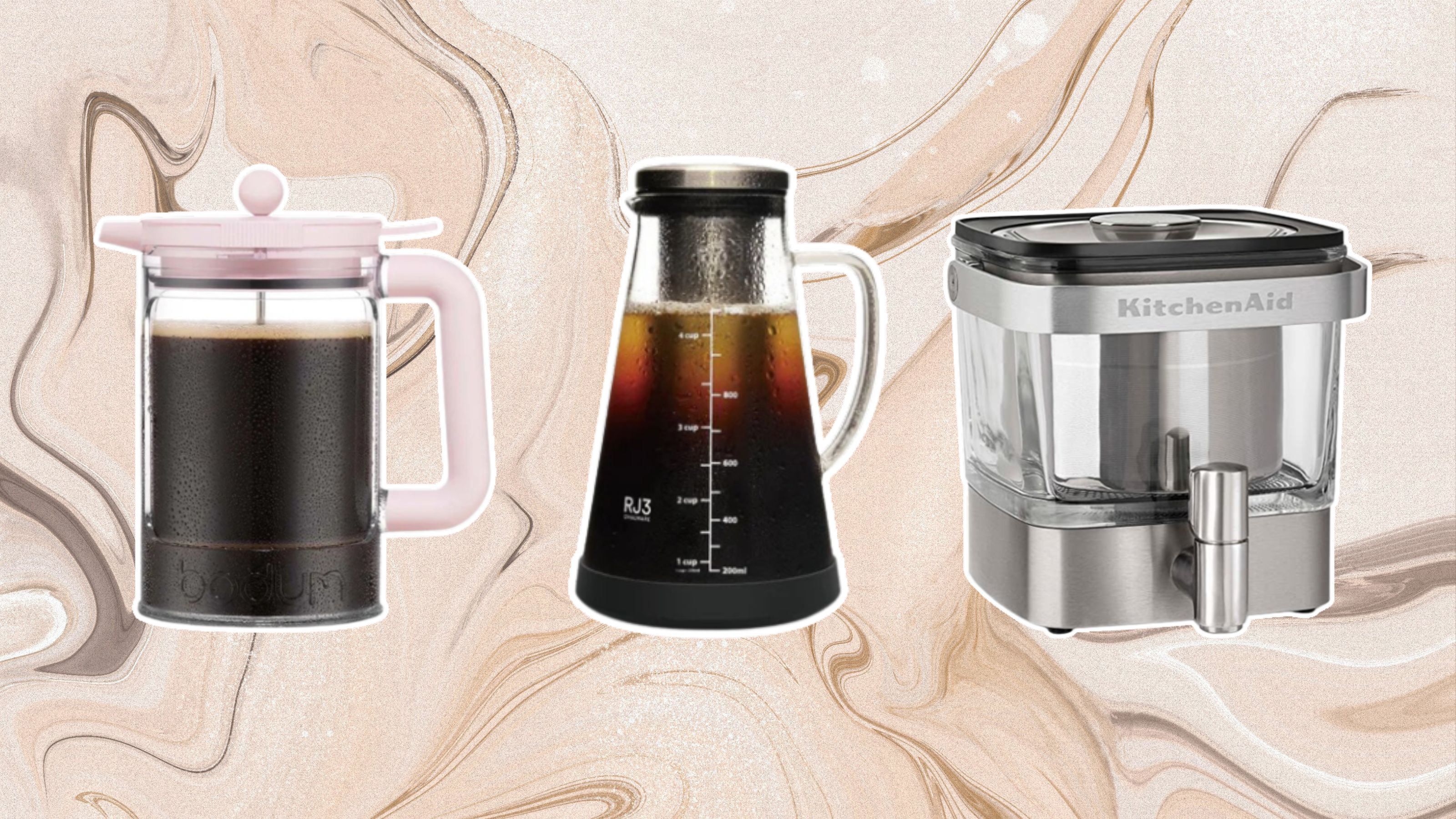

Jaclyn Turner
I never really used to care about the difference between a cold brew coffee maker and an iced coffee maker. Iced coffee is iced coffee, IMO. But boy, was I wrong. If you want the best and most refreshing experience, go with a cold brew coffee maker. It will change your coffee routine. In fact, I haven't visited Dunkin' for my signature iced coffee order in weeks, maybe months, since I've figured out to replicate my order at home: Oat milk, syrup, and all.
With so many cold brew coffee makers out there, I went on a (caffeine-fuelled) endeavor to test a bunch, to determine which ones are the best on the market. Newsflash: there are quite a lot, many with very subtle differences, and some with a very unique point of view.
Quick Menu:
1. Cold brew coffee maker reviews
2. Things to consider
3. FAQs
4. How we test
6. Where to buy
Yes, you can do the same job with your average coffee maker, so long as it has an "Over Ice" setting, but if you're like me and you rely on iced coffee to survive from April through to September, then it'll be worth investing in a dedicated machine. There truly is nothing comparable to the smooth, rich flavors brought out by cold brewing coffee.

Jaclyn was previously ecommerce editor at Real Homes, and also reviewed products for Livingetc and Homes & Gardens. Jaclyn tasted all bar one of these cold brew coffee makers, using the same type of coffee each time to ensure the results were fair. If you're wondering about her preferred coffee order, she's currently loving cold brew with oat milk and caramel.
8 of the best cold brew coffee makers

Capacity: 1-1.5L
Material: Glass
+ Fine metal filter
+ Sleek design
+ Easy-to-see measurements
+ Removable silicone base gives a good grip
+ Dishwasher safe
- Airtight seal, but the cap does not screw on
While it has a suggested coffee amount of 85 grams, it didn't require precise measuring which was helpful for those without any measuring equipment. More or less it's filled it up ⅚ of the filter with coarse ground coffee and then pour water over the grounds, filling it to the measuring line on the size. While it's brewing, it's recommended to give it a stir every few hours. Once you're ready to drink, you'll pull out the metal filter, the directions were direct and easy to follow, with fun illustrations, too.
The coffee itself was really smooth. It was actually, one of the first coffee makers that I got to test, and the rest had a lot of measure up to. The Ovalware brew is not as concentrated, so I was pouring more in my cup, and going through my coffee faster. After a few days, when I got to the bottom, there was some coffee sediment that had settled, and a little sediment on the bottom, making the last cup on the last morning a little gritty.
As far as the design of the Ovalware, I was initially struck with the beaker-style vial that resembled what you'd see in a Chemistry lab. It uses a metal filter, and the snug, airtight lid, kept my coffee fresh. However, it's not something you'd want to flip upside down or shake aggressively. Haven't tried to change that yet as I don't want to chance spilling coffee all over my counter. Additionally, since the glass is fragile, and I was a little worried about handling it, the non-skid rubber base absorbs any shock of putting it down too hard, like a cushion. Overall, excellent value for the money, great design, and a delicious coffee!
Real Homes rating: 5 out of 5 stars

Best splurge cold brew coffee maker
Size: 28 oz or 14 2oz. coffee concentrate
Material: Glass
+ Sturdy Construction
+ Handle
+ Easily fits in fridge
- Glass is fragile
If you want to get fancy or love being able to pour yourself a cup straight from the fridge, you'll really love KitchenAid's Cold Brew Coffee Maker. It sits compactly on your fridge shelf, with an easy pour dispenser.
Another relatively simple process. You fill to the fill line ( or 9 oz./250 grams) with coarse ground coffee, then pour in 1 liter of water, followed by another 8 ounces. This brewing process required me to pull out the measuring pitcher. It can then be brewed in the fridge or at room temperature. Once it's done, you'll just lift the brew basket with the interior handle out of the basket, and you'll be left with approximately 28 oz. of cold brew, or 14 2oz. coffee concentrate servings (mix 1 part coffee with 2 parts milk or water).
The dispenser design is so easy to handle. Its short and stocky design makes it easy to fit onto any shelf in the fridge. Mine was on a lower shelf, which freed up the valuable top shelf but made using the handle a little awkward since it's a two-handed effort to safely pull in and out of the fridge. As far as carrying the brewer from the counter to the fridge, the handle felt very secure. Everything about this brewer felt really sturdy, and I love how easily it dispenses. The spout was very secure, and nothing dribbled out into my fridge, which only made me love this little vessel more. It's a little luxury to have the feeling that your cold brew is on tap.
The large metal brew basket holds a lot of coffee. However, a fair amount of coffee is absorbed into the coffee grounds, leaving the final vessel half-full after pulling out the brew basket. The resulting coffee concentrate has a powerful kick, and while I tried to keep my pours mostly to two ounces, I'm undecided if it left me enough with 14 servings. Of course, if you want even more coffee, an XL 38-ounce option is available too.
Real Homes rating: 5 out of 5 stars
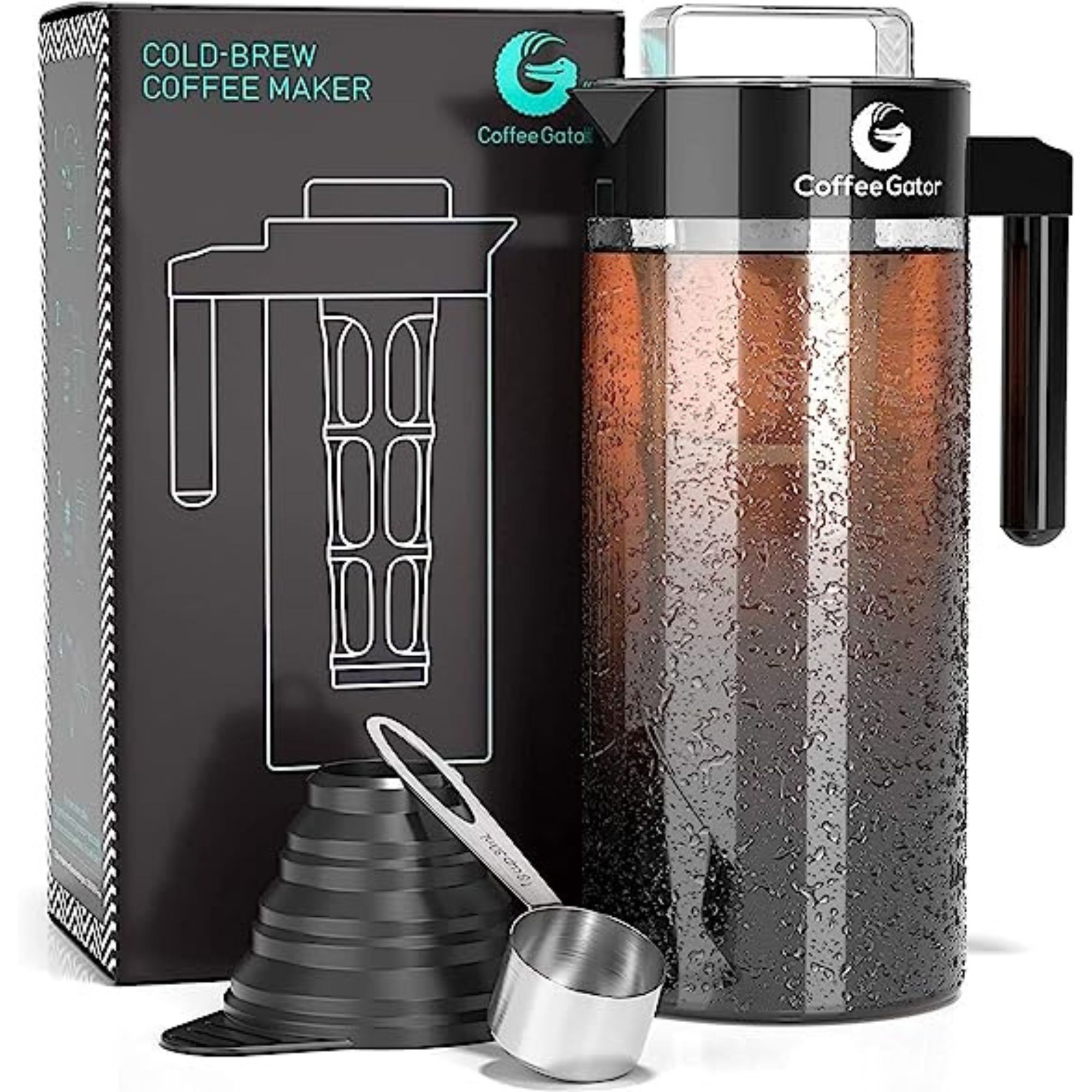
Size: 35.19 oz
Material: Glass tank with a plastic lid, handle and filter
+ Good value compared to buying pre-made cold brew
+ Strong tasting coffee
+ The jug is easy to assemble and use
+ Easy to clean after use
+ Glass is heat resistant and BPA-free
+ No need for paper filters as the jug includes a reusable filter - + Leak-proof lid
- It takes a minimum of eight hours to brew the coffee
- It uses quite a lot of coffee per jug
If you’re a cold coffee addict, you have got to give this ultra-easy-to-use jug a try. For making larger batches of cold brew coffee with minimum fuss, the Coffee Gator Cold Brew jug is the perfect buy.
The brew process is surprisingly simple: all you need to do is fill the filter with ground coffee (screwing it into the jug) and then pouring water into the filter, before adding the leak-proof lid to the jug. Then, all you need to do is let it sit (ideally in the refrigerator) for a minimum of eight hours (for a darker brew leave for 12-24 hours), and voila, you’ll have homemade cold brew.
A totally simple pitcher system that turns the process of making cold brew at home seriously simple. Yes, it takes time for the coffee to actually brew, but the preparation couldn’t be simpler — neither could the cleaning process, for that matter. After you’ve left the coffee to brew, the result is a subtly sweet brew of chilled coffee that’s packed full of flavor notes. What’s great about this setup is the fact that you can customize your flavor to suit your personal preference — as the longer you leave the coffee to brew for, the stronger the taste will be.
Real Homes rating: 4.5 stars out of 5

Best Amazon cold brew coffee maker
Capacity: 1 qt (2 qt available too)
Material: Plastic
+ Plastic less prone to breaking
+ Simple, unfussy design
+ Secure lid
+ Available in two sizes
- Plastic body and mesh filter feel cheap, comparatively
- 2 Qt. size is too tall to fit on the top-shelf of the fridge
Over 32,000 people have rated Takeya's best-selling Deluxe Cold Brew Maker 5 stars, so it definitely deserves a closer look. In terms of affordability, popularity, and ease of use, this is definitely a strong contender.
The overall brew process is pretty easy and straightforward. I did have to pull out a measuring spoon to gauge the amount of coffee I needed, as well as a separate water pitcher since there were no measuring marks on the jar, except the note to pour water until its a half-inch from the top. The lid screws on for an airtight fit, and it's recommended to give it a good shake every so often. When its done, you'll simply detach the mesh brew basket and replace the lid.
My first impression that it felt a little cheap, due to the design decision of the shatterproof plastic and mesh filter, but that also makes it more durable and less fussy.
As I like my coffee strong, the amount of coffee I poured felt less like a concentrate and more like using a 3:1 ratio of coffee to water. Basically, I could drink this one straight without much assistance. When I brew it again, I will definitely try a longer time. This was actually the only brewer I tried that used a mesh filter. But it produced good coffee, and it's an affordable option.
Real Homes rating: 4.5 out of 5 stars
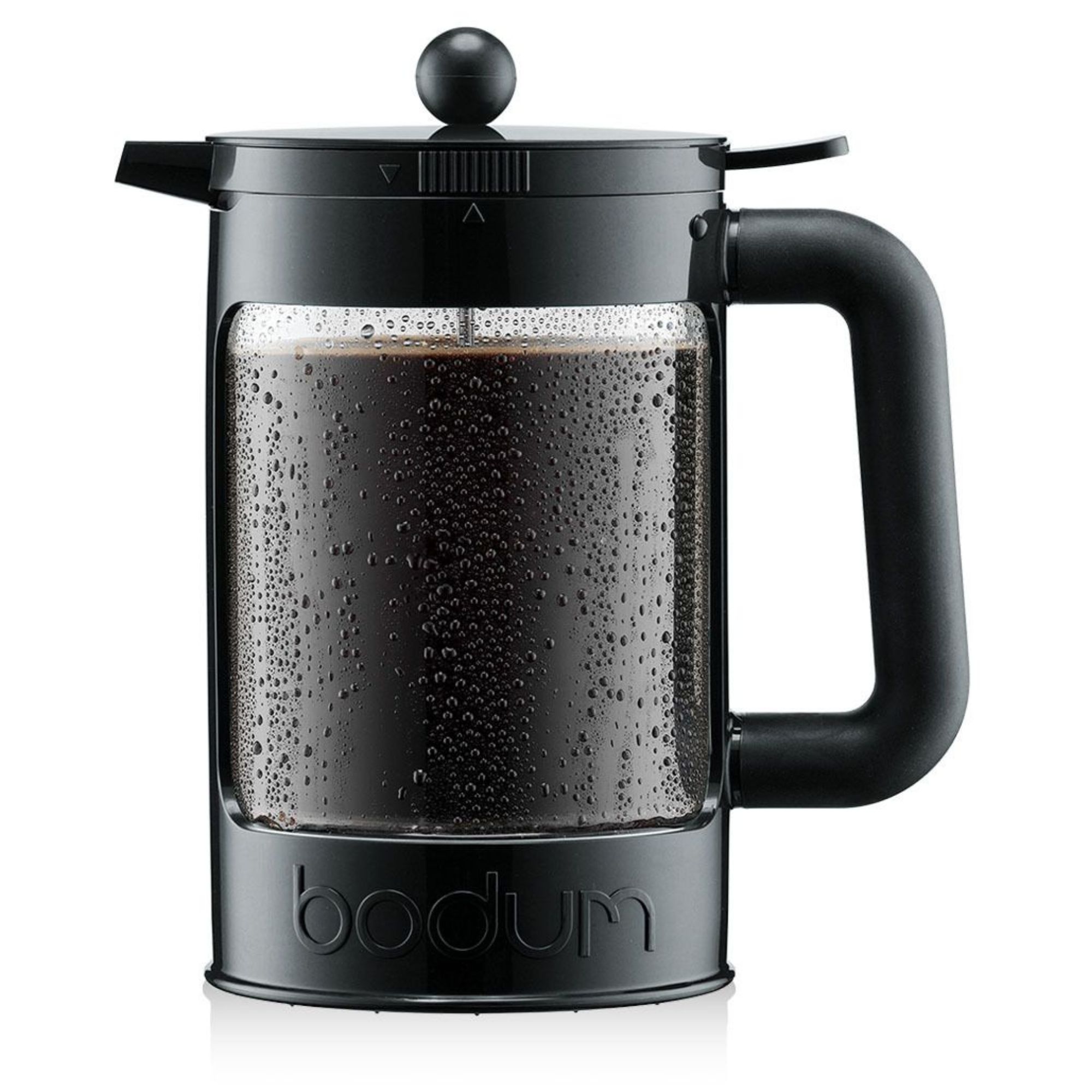
Best budget cold brew coffee maker
Size: 51 oz
Material: Plastic
+ Available in lots of colors
+ Mimics French Press Brewing Method
+ Plunger locks in to avoid spills
+ Usually under $15
- Grounds can remain in the coffee
- Plunger stays in after the brewing is complete
- Directions are a little confusing
Bodum's Bean Cold Brew Maker mimics the technique of a French Press with a brewing process that involves the grounds and coffees steeping together for the standard 12-24 hours before using a plunger to filter the grounds.
The directions from Bodum are not super direct about the exact amount to add and did take some outside research. Bodum suggests adding twice the amount of coffee you usually do, adding fresh cold water, and stirring. A Bodum blog post suggested approximately 163 grams of coffee and 1,300 grams of water or a 1:8 ratio, which also requires getting out a scale to measure. There is a silicone airtight lid to keep the coffee fresh, but when it's time to finish brewing, you'll swap in a plunger to complete the process. Less water is also lost, and more turns into coffee. Of course, it may take a little bit of elbow grease to plunge the coffee down.
The packaging says it makes 12 small cups, but it doesn't feel like it, as you'll want to pour more coffee than milk, coffee, or creamer. If you're just starting out your cold brew journey, the Bodum Bean Cold Brew Coffee Maker is a great and affordable option to see if brewing cold brew at home is for you. It's available in a ton of colors, but the major trade-off we've is that its design just isn't as sleek as some of the others on our list and it's a little bulky.
Others have noted that the mesh isn't fine enough and that the grounds seem to still remain in the coffee.
Real Homes rating: 4 out of 5 stars
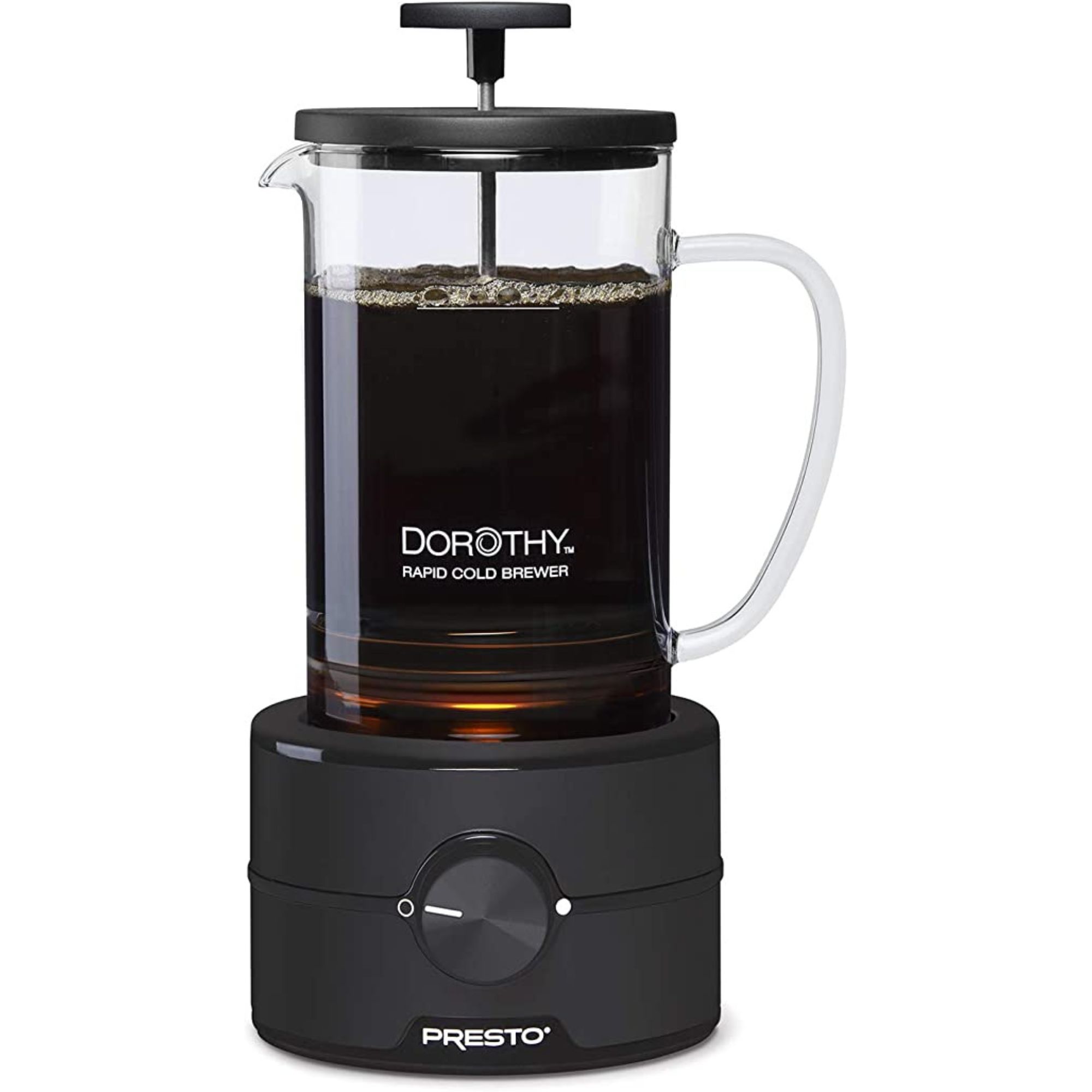
Best rapid cold brew coffee maker
Capacity: 22 oz
Material: Glass
+ Cold brew in a fraction of the time
+ Quiet
+ Coffee isn't bitter
+ Compact size
- More silt than with traditional brew methods
- Fragile glass
- No lid while brewing, and no lid to store
The biggest downside to cold brew, it takes hours to complete, and if you forget the night that you need to brew a new batch, well, you'll be out of luck. That is until you get your hands on Presto's Dorothy Electric Rapid Cold Brewer, which promises 22 ounces of cold brew in just 20 minutes. This one took a minute to figure out, but once you give a good read-through of the directions, it'll all start to make sense. Mostly, it involves adding water to the fill line, gradually turning the dial until a vortex is formed, and then gradually adding 2/3 cup of coffee. Once the spin cycle is complete, you'll let it sit for 5 minutes before adding in the plunger.
Because I used cold filtered water, I doubled the brewing time, but if you use room temperature water, the brew times start at 15 minutes, which is equivalent to 12 hours of brew, 20 minutes for 16 hours, which is most similar to how long the traditional cold brewers steeped for, and 30 minutes to mimic a full 24 hours. It. brews open air without a lid, which was a little disconcerting at first considering water is spewing in a vortex, but if you stay mindful of the fill lines, you'll be good to go. The Dorothy Electric Rapid Cold Brewer is like a French Press and a tornado had a baby, that resulted in cold brew, fast. It's a way to trick the system. While it feels gimmicky at first to watch the vortex spin, you'll be able to get your favorite cold brew results in a fraction of the time.
Compared to the others, a serving suggestion is about one cup, so this brewer makes just shy of three portions. You're less likely to have leftovers to store with this one, but if you do choose to, you'll want to pour it into another container since there is no lid.
The coffee definitely comes out tasting like it had brewed for hours, not just 30 minutes. I found the after-taste to be very pleasant, and almost stronger than the initial first sip. Even better, there was nothing bitter about it, making for smooth sipping. The last cup, however, did leave a little grit, which is most likely due to the French Press styling and the fact that the coffee brews loosely in the pot.
Some other reviews I've seen also mentioned that the glass is thin, and to exercise care to not break it.
Real Homes: 4 out of 5 stars
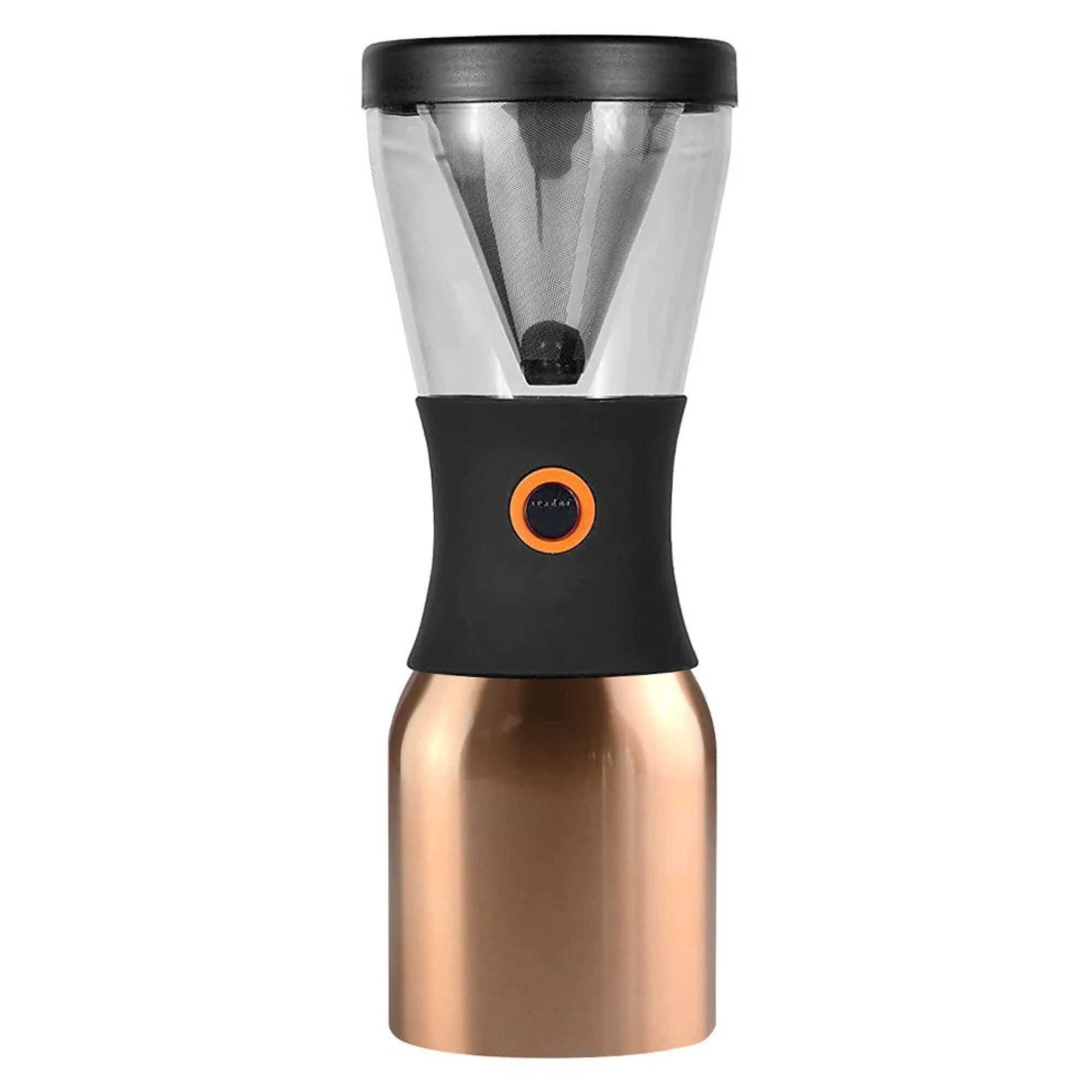
Best portable cold-brew maker
Capacity: 1L
Material: Tritan and stainless steel
+ Comes in a lot of colors
+ Stainless Steel container is insulated to keep cold longer
+ Satisfying to drain into the container
- Needs to stay in one place while brewing, not suitable to brew while in a bag
- Makes a smaller portion (but also convenient for traveling)
I saw the Asobu Cold Brew maker a few years back at a trade show, and I've been intrigued by it ever since. Now, finally giving it a try, it's a bit of a novelty, but its insulated container can even be used for other beverages than just coffee or tea.
The Asobu had a bit of a unique brewing process, simply because it instructed pouring coffee and water a third at a time, watering the grounds in a circular motion. Essentially, you fill the micro-mesh filter with 20-30 grams of coffee, then pour a cup of water in a circular pattern, repeating both steps a total of three times. Then, it sits out at room temperature for the standard 12-24 hours. When you're finished, instead of removing the filter submerged in the water, a push-button drains it into the stainless steel carafe. Besides the slightly leaky push button, I also didn't love that I couldn't see how much cold brew was actually produced since so much water is lost in the brewing process. Upon a closer look, the Asobu definitely produced less cold brew, but draining it into a new container reduced the risk of sediment piling up, and resulted in smooth-tasting coffee. From there, refrigerate or add some ice cubes. Yes, the insulated travel carafe is perfect for a cold brew on the go, but for brewing purposes, you'll want to leave it in one place, upright, as in not in your bag. It's made of sturdy materials, a Tritan brewing carafe, and a stainless steel holder, but I found that the push button was not leakproof. It didn't create a mess, but not something I'd trust not on a steady surface. Luckily, when you want to take your insulated carafe with you, there is an airtight lid that screws on.
The stainless steel vessel is also really convenient, and the tapered design at the top makes it easier to hold and pour. While I didn't have a need to tote it along with me with coffee inside, once it was cleaned out, it was repurposed as an easy-to-pour water bottle for an afternoon at the dog park on a hot summer day.
Real Homes rating: 3.5 stars out of 5
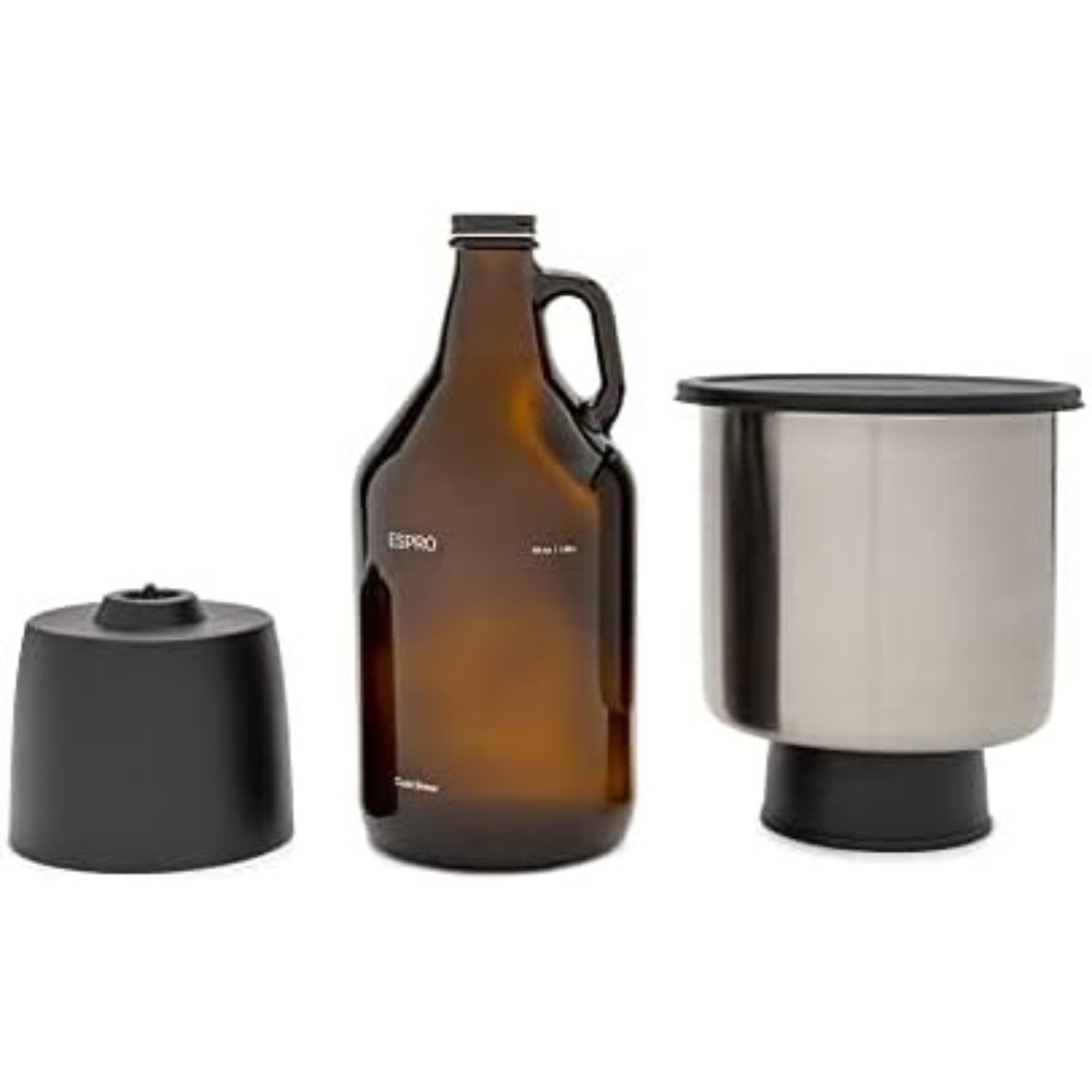
Best cold brew maker for the coffee connoisseur
Capacity: 64 oz
Material: Stainless Steel/ Glass Growler
+ Easy and engaging brew process that kind of feels like a science experiment
+ Makes a very smooth and strong cold brew concentrate
+ Products can nest inside each other to store
- Requires use of paper filters that are only made by Espro
- The jug only fits on the top shelf of the refrigerator
- Pricey
For those who live life by being a little bit extra, go for the Espro CB1. Not to mention it makes a fabulous gift for the special person in your life who always seems to have a cup of cold brew in their hands.
The first time I went to brew, I didn't have enough coffee. I had a full 10 oz. bag, but to brew the maximum portion, the recipe called for a pound. The kit comes with just four paper filters to start, so I had every intention of making the most I could. After all, it's good to use in the fridge for up to two weeks. Alas, once I went back again, I had about 3/4 of a pound, which there was a recipe for. And while. it didn't make the full 64 oz., it made a more than sufficient amount.
The brewing process was definitely the most interesting of the others. It requires a paper filter, with a mesh filter at the bottom of the brew basket. You fill the filter with the coffee grounds and then add in the water. The growler jar actually has markings on the side so you can use that to pour the water in. Seal with the lid, and simply leave at room temperature. When it's finished, it comes with a connector that funnels into the growler. At first, the stainless steel brewer looks top-heavy, but it was really sturdy. The directions said it could take 20 minutes to drip through, but the majority slipped through within minutes, and it was so satisfying to watch.
The expectations were high with this $100 coffee machine, and it definitely excels in terms of quality and experience.
The proprietary filters were the main drawback for me. And though the idea is this should last me two weeks, you have to remember to have the filters stocked, and can't just pick them up at the grocery store. The Espro Filters are $20 for a pack of 20, so it's not a one-time purchase. Because of the larger batch sizes, it also requires you to have more coffee on hand than the other brewers. The jug itself is also heavier and less easy to maneuver in and out of the fridge, but it's also double the size. Here, you can have quality and quantity.
As for the coffee, it makes one of the strongest and smoothest concentrates. It even had my dad gushing about how this was the best coffee he ever had. And he drinks a lot of coffee.
Real Homes rating: 4.5 stars out of 5
What to consider when buying a cold brew coffee maker
Not all cold brew coffee makers are made equal. So it's important to choose one that suits your lifestyle. Have a look at the five criteria I've listed out below which will no doubt impact your decision-making process.
Size: You don't want to be washing up a huge carafe of coffee if you're only going to be using it to make a cup of two. So in this case — size does matter. A large cold brew coffee maker will either have to sit on your countertop or be stowed away in a kitchen cupboard when not in use, so make sure you have the space for it.
Brewing method: With cold brew coffee makers, it's either a case of immersion or a slow drip. Immersion is generally the more popular style, resulting in a stronger-tasting coffee. Slow drip sort of works similarly to the best filter coffee makers on the market. Slow drippers are generally speedier at making your beverage, but the resulting drink may be a little weaker in taste.
Price: Unlike Jessie J's song, we are thinking about the price tag here. If cold brew coffee is your go-to drink 365 days a year, you might want to spend money on the best cold brew coffee maker brand (with all the fancy features). But if you only bring it out when the mercury starts to rise, consider a cheap (but highly-rated one) to get you started.
Filter or Infuser? How do you brew, boo? If you've got a drip filter coffee maker at home, you might be less bothered about using paper filters (as you'll most likely have them in your coffee-making inventory). But, these days most cold brew coffee makers have built-in infusers. The latter = less mess and less money spent each month on filters.
Material: If you invest in the best non-toxic cookware, the chances are you'll go for glass over plastic. However, most plastic these days is BPA-free and is a better choice for you butter-fingered babes.
FAQs
What's the difference between cold brew and iced coffee?
Cold brewing results in lower acidity for a smoother, naturally sweet taste. It's a slow-brew process that takes between 12 and 24 hours at room temperature, or in the fridge to extract the oils, caffeine, and sugar. The longer the coffee steeps, the stronger the flavor. The resulting product — a highly concentrated coffee that is mixed with a combination of ice and water or milk. With cold brew, less goes a long way.
Chris Diamantakis, co-founder of Pure Joy Coffee explains that "Cold drip coffee separates the cold water from the coffee grounds completely. The technique requires a cold drip apparatus or ‘drip tower’ — usually made of three vessels—that allows iced water to slowly drip over freshly ground coffee. The ground coffee absorbs each drip of water, which then drops into a separate vessel at the bottom of the tower."
Once it's brewed, it has a two-week shelf life.
Pre-made cold-brew options are available, but some with sweeteners or creamer could have preservatives, and they vastly range from affordable to not. Brewing at home lets you use your favorite coffee blends, and of course, have control of what goes into your coffee. Some also say it's more environmentally friendly too.
Meanwhile, iced coffee starts from the traditional coffee brewing process aka hot then cooled by pouring over ice or being refrigerated. Iced coffee is at risk of becoming diluted when using ice cubes to cool it from its hot temperature. For best results, it should be brewed double strength to not lose its flavor.
Cold Brew turns out what would be described as full-bodied, and ice coffee is more medium-bodied.
What is the best ratio for cold brew coffee?
According to Diamantakis, "a water-to-coffee ratio of around 1:4 or 1:5 is commonly used. However, this can be adjusted based on personal preference."
What grounds to use for cold brew?
"Starting with high-quality, freshly roasted beans is essential for a good cold brew," says Diamantakis.
He then goes onto explain that cold brew requires a coarser grind compared to other brewing methods.
"This helps to prevent over-extraction and bitterness, resulting in a smoother, less acidic brew. Using cold, filtered water helps extract the flavors from the coffee beans without any unwanted elements. Avoid using hot or tap water, as they can negatively affect the taste of the final product,"
"After steeping, cold brew should be strained and stored in airtight containers in the refrigerator. Allowing it to chill for a few hours or overnight before consumption enhances the flavors."
How we test cold brew coffee makers
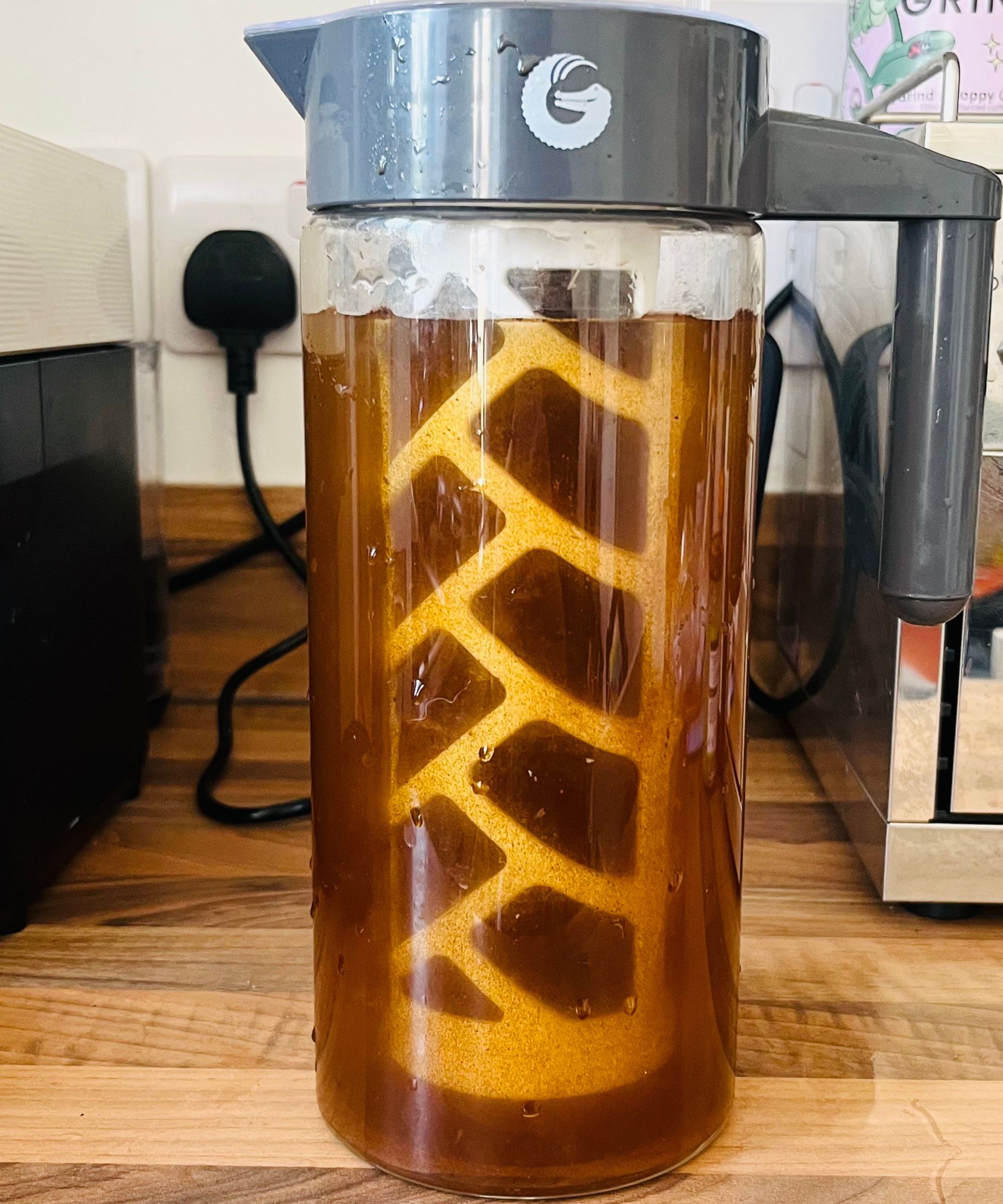
We try our very best to test every cold brew coffee maker we include in our guides, which is why the majority of the coffee makers in this guide come with ratings out of five to indicate how well we liked it when we tried it hands-on.
Where we don't have hands-on experience with a machine we depend more heavily on other user reviews, and take into account the specs of the machine and the price. We will never give something a rating out of five if we've not tried it ourselves.
In our testing, to keep things standard, for seven out of eight products we reviewed, we used Gevalia's Guatemalan Coarse Ground Coffee and brewed it between 16 and 17 hours, right in the middle of the recommended time of 12-24 hours. In the beginning, we definitely underestimated how much coffee that goes into cold brew. For the most concentrated brews, you'll want a lot on hand.
Meet our cold brew coffee maker reviewers:
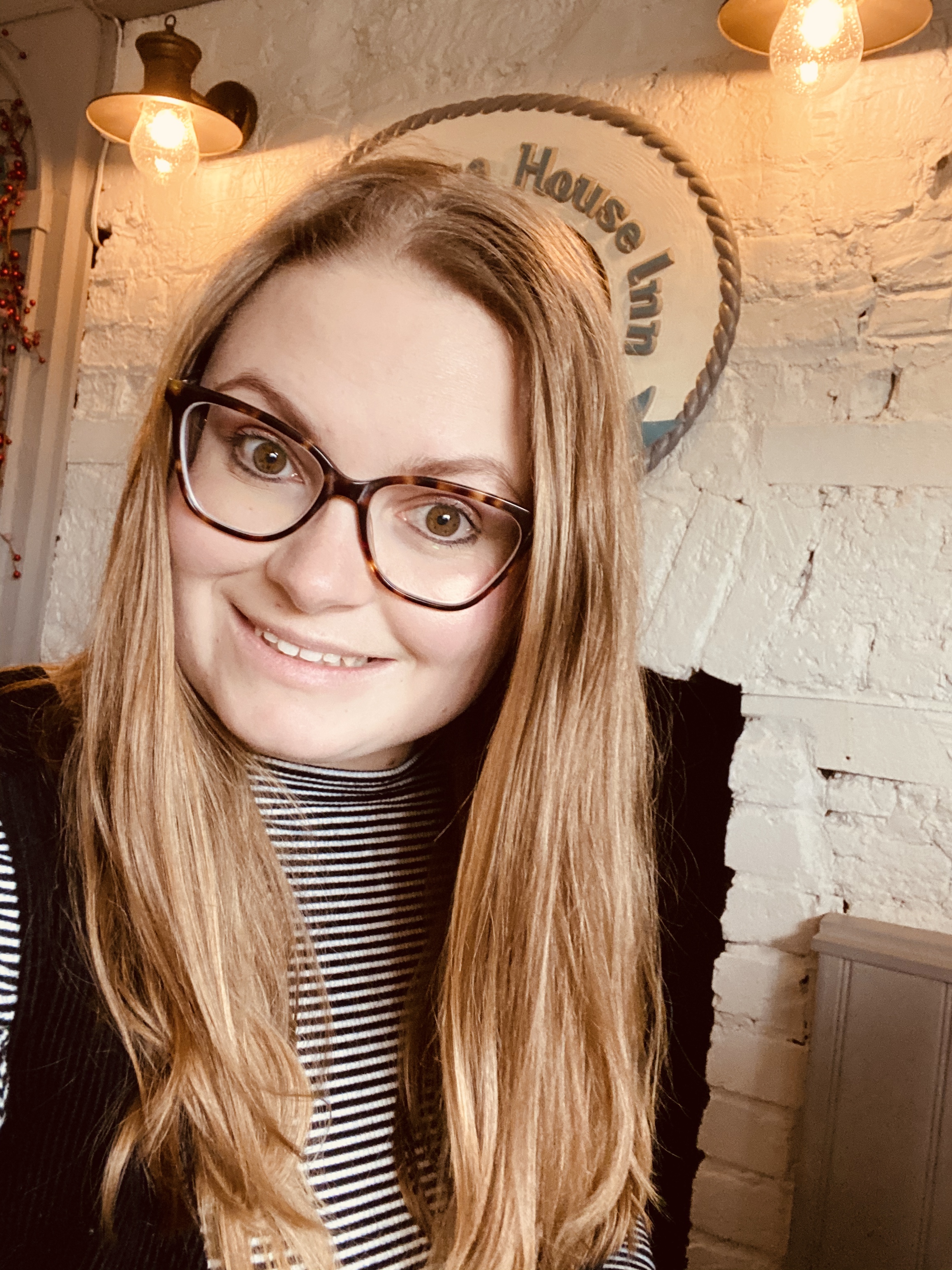
Beth is our staff writer and purchased the Coffee Gator Cold Brew Jug after realizing that she was spending far too much on fancy iced drinks from local coffee houses. She likes to use the brewing system in the summer to make all her fave DIY chilled coffees and is always trying out new recipes (many of which she finds while browsing Pinterest). She first purchased the system two years ago, after seeing a TikToker raving about it, and has utilized it every summer since. She’s absolutely obsessed and wouldn’t like to be without it.
Where to buy a cold brew coffee maker
- Ace Hardware cold brew coffee makers
- Amazon cold brew coffee makers
- Best Buy cold brew coffee makers
- Bloomingdale's cold brew coffee makers
- Bodum cold brew coffee makers
- Crate & Barrel cold brew coffee makers
- Lowe's cold brew coffee makers
- Macy's cold brew coffee makers
- Overstock cold brew coffee makers
- Target cold brew coffee makers
- The Home Depot cold brew coffee makers
- Walmart cold brew coffee makers
- Wayfair cold brew coffee makers
Get small space home decor ideas, celeb inspiration, DIY tips and more, straight to your inbox!

Hi, I'm the former acting head ecommerce editor at Real Homes. Prior to working for the Future plc family, I've worked on a number of consumer events including the Ideal Home Show, Grand Designs Live, and Good Homes Magazine. With a first class degree from Keele University, and a plethora of experience in digital marketing, editorial, and social media, I have an eye for what should be in your shopping basket and have gone through the internal customer advisor accreditation process.
- Jaclyn TurnerEcommerce Editor